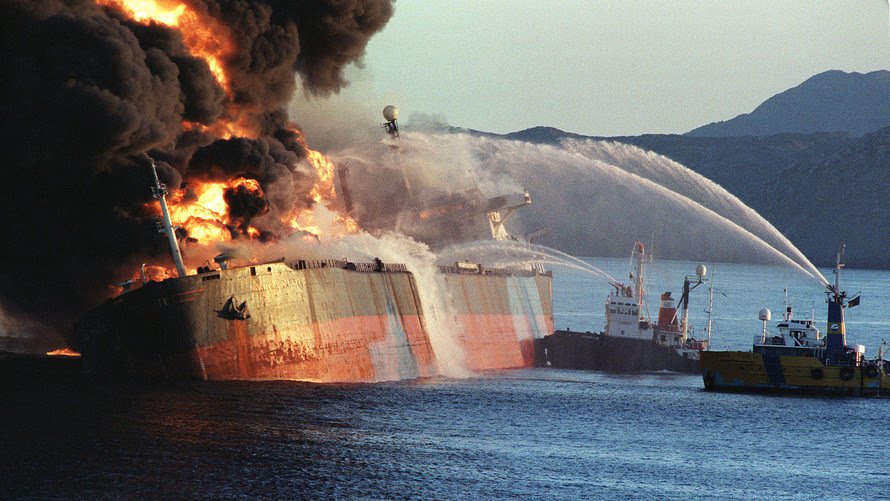Every crisis in the Persian Gulf refers to an old struggle between Saudi Arabia and Iran for regional hegemony.And always with oil as a backdrop and with the sacred international mission to ensure its extraction and keep the vital routes of transport and distribution free (85% of oil is transported by sea, the rest by oil pipeline). Arabia, above all, the world’s leading exporter, can not live without the ‘black gold’, which accounts for 85% of its total exports and 90% of its income.
The Gulf is so important from the economic point of view that it is especially sensitive from the political point of view. And Arabia and Iran, the two largest and most populated countries in the area, do not get along. Riyadh is the guardian of the essences of Sunnism (‘Wahhabism’). Tehran, of those of Shiism. Arabia is … Arabic. Iran, Persian. Arabia is a Cesaropapist monarchy. Iran, a theocratic republic.
Arabia breathes through the Strait of Hormuz, through whose narrowness every day about one third of the world’s crude oil passes (around 20 million barrels). Its banks are, however, ‘property’ of Iran, on the East, and Oman, on the West. And, although Oman is part of the Gulf Cooperation Council, headed by Arabia, the alliance is more formal than anything else. In addition, Oman shares historical ties with Tehran, which became especially visible in the negotiations of the Iranian nuclear pact. And while the US Fifth Fleet is based in Bahrain, which safeguards common security, it is known that the most reliable protection, like well-understood charity, begins with oneself.
This is what Saudi Arabia considers an immense peninsula, but ‘encased’ between two aquatic corridors, the Red Sea, closed by the Strait of Bab El Mandeb, and the Persian Gulf, suffocated by that of Ormuz. The country is already the third, after the United States and China, which invests most in Defense: practically 70,000 million dollars, 10% of its GDP. To his traditional interest in strengthening his powerful land and air forces, he is now adding his dedication to the naval.
It has undertaken an ambitious and expensive program of expansion and modernization of its Navy to impose itself on the Iranian, which is the backbone of a swarm of small, maneuverable and fast boats equipped with cannons, torpedoes and short-range missiles. Features very suitable to operate in the inland waters of the Gulf. But Iran does not settle for that kind of fleet. In order to increase its naval capabilities, it is constructing and putting into service six new frigates of the ‘Mowj’ class, based on the three of the ‘Alvand’ class, already very old, launched at the end of the 60s.
Arabia, in response to that neighboring rearmament, bets strongly. It will place in the sea in the coming years nine units of between 3,000 and 4,000 tons, which will join the three frigates F-3000 (class ‘La Fayette’) renamed as ‘Al Riyadh’ class. Vessels that, having increased their original displacement to 4,800 tons and with some capacity improvements, expressly commissioned France in 2002 and 2004 to succeed the four F-2000s purchased in the 1980s and now at the end of their useful life.
Arabia will also have four LCS (littoral combat vessels) and five ‘Avante’, corvettes built by Spain in the Navantia shipyards and similar to the four delivered to Venezuela between 2011 and 2012. Some of them with an abundant supply of SAM missiles against the numerous Iranian ballistic and cruise missiles. Especially, among the latter, the modern ‘Hoveizeh’, with a range of 1,300 kilometers.
In accordance with its close interests, Arabia, like Iran, has always had, for the same obligatory practical reasons, an essentially coastal and non-oceanic Navy, served by smaller vessels and, well, well equipped for anti-submarine warfare .
And the Saudi Navy suffers a long deficiency in relation to the Iranian: it does not have submersibles. Iran, on the other hand, owns three of the ‘Kilo’ class (of 3,000 tons, Soviet manufacture and in service with the Russian Navy) and about thirty other lower displacement models. Including 24 ‘dwarf’ submarines, of the ‘Ghadir’ class, of only 120 tons, but very useful in the shallow waters of the Gulf. A school of ‘piranhas’. Arabia, apparently, plans to equip itself soon with seven submersibles of the ‘Scorpène’ class, of 1,700 tons, of diesel-electric propulsion and developed by a European consortium formed by the French company Naval Group and the Spanish company Navantia.

COMMENTS